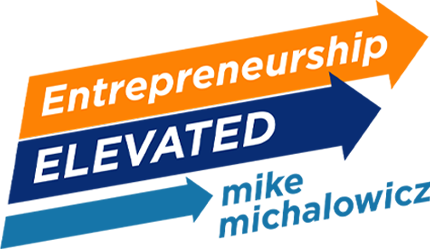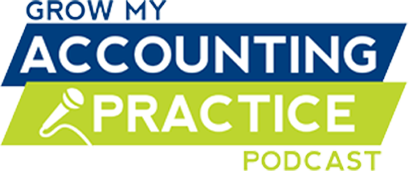I have a confession. I used to be a workaholic. Now, I need to clarify that I am not touting any badge of honor here. I used to think being a workaholic was a good thing. These days, I want to share that I believe we should get a reward for not being workaholics.
I know. You think you have to illustrate that you have amazing work ethic, that you work harder than the rest, that you’re innovative, that you care about your clients. I get it. All of it. But…
If I’m constantly working in my business, what does that tell you? Look, there’s a time to hustle, but not as an overall culture. Work? I still love to work. But I also love to LIVE. And that means to get that freedom of time, I need to work smarter, not harder.
This isn’t new news. When I found that I was burnt out and missing out on time with my health, growing kids, aging parents, and heck, even my marriage, I knew I had to make some changes. So I began implementing systems that would help my business run smoother, with less of my personal time and energy. It didn’t happen for me overnight, but eventually, I got my systems down and created Clockwork Revised and Expanded to save you the trouble of figuring out how to streamline your business, and increase your bottom line, as well as your freedom of time.
Here’s an excerpt from Clockwork Revised and Expanded about the solution to creating the best, and healthiest, productivity in your organization:
The Solution is not the Solution
As is true for many business owners I’ve known, I thought the cure for my workaholicism was better productivity. If I could just do more, faster, I could find more time for my family, for my health, for fun, and to get back to doing the work I really loved. The work that fed my soul.
I was wrong.
You and I both know extremely productive people who work sixteen hours a day. You and I absolutely know the “I do best when I cram” people. Maybe it’s you. Once upon a time, it surely was me.
In an effort to be more productive, I tried it all: Focus apps, the Pomodoro method, working in blocks. Starting my day at four a.m. Ending my day at four a.m. To-do lists. Not-to-do lists. Lists on yellow notepads. Lists on my phone. Lists of just five things. Lists of everything. Back to lists on yellow notepads. The “Don’t Break the Chain” method, which quickly led me to the “Chain Myself to My Desk” method. No matter what hack or technique I tried, no matter how productive I became, I still slipped into bed at night long after I should have, and woke up the next morning way earlier than I should have, with a to-do list that seemed to have magically grown overnight. Maybe I did things faster, but I surely didn’t work fewer hours. If anything, I worked more. Maybe I was making progress on many small projects, but many more new projects were filling up my plate. And my time was still not my own. All my years of studying productivity had given me nothing but more work. It was an epic fail.
If you haven’t tried some of the productivity strategies I rattled off like bad failed diet plans, I’m sure you have your own list. An entire industry is built around the desire to do more, faster. Podcasts, articles, and books; mastermind groups and coaches; productivity challenges, calendars, journals, and software. We buy into the next productivity solution someone recommends because we’re desperate. Desperate to grow our companies by getting more done faster, and managing all our work without losing our minds.
It took me about fifteen years to figure this one out. I actually wore the productivity master’s badge of honor—the workaholic badge. I was a proud member. I was the fastest task-ticker-offer in the land. (What? It’s a thing.)
In my book Profit First, I applied Parkinson’s Law—“our consumption of a resource expands to meet its supply”—to profit. Just as we use all the time we have allocated for a project to finish it, we also spend the money we have, which is why most entrepreneurs rarely earn as much as their employees, much less turn a profit. The more money we have to spend, the more we spend. The more time we have, the more of it we spend working. You get the idea.
The fix to this behavior is ridonkulously simple: limit the resource and you limit your utilization of it. For example, when, after you collect revenue, you allocate profit first and hide it away (in a remote bank account), you have less money to spend. So guess what? You spend less. When you don’t readily have access to all the cash flowing through your business, you are forced to find ways to run your business with less.
And now that we’re talking about time, Parkinson’s Law is even more relevant. Whatever time you give yourself to work, you will use. Nights, weekends, vacations—if you think you need it, you’ll work right through your time off. This is the root cause of the failure of productivity. The goal of productivity is to get as much done as quickly as possible. The problem is, because you’ve prioritized a seemingly endless amount of time to running your business, you’ll continuously find a way to fill up the time. The more productive you are, the more you can take on. The more you take on, the more productive you have to be. Do you see how productivity is a trap?
If you’re like me and most entrepreneurs I meet, you use the time you saved to do more work. And not the work that feeds your soul. Not the work that could truly make a difference for your business. No, you do the next urgent thing. You put out the fires, and then you do the next tasks that will be the next fires until you’re interrupted by some other even more urgent thing that pops up. You keep working your ass off and feeling as though the more progress you make, the more work you have.
Yes, productivity is important; we all need to make the best use of our time. To be unproductive is like sinning against the business gods. (Plus, sittin’ around eating Cheetos and watching ThighMaster infomercials all day isn’t going to move anyone’s business forward.) But in time, I came to understand the real holy grail is organizational efficiency. Productivity gets you in the ballpark. Organizational efficiency gets you hitting home runs.
Organizational efficiency is when all the gears of your business mesh together in harmony. It is the ultimate in leverage, because you design your company’s resources to work in concert, maximizing their output. Organizational efficiency is where you are accessing the best talents of your team (even a team of one) to do the most important work. It is about managing resources so that the important work gets done, instead of always rushing to do what’s most urgent. And it’s about removing yourself from the day-to-day grind so you can make all of that happen.
I have a feeling this is not news to you.
If you know you need to improve organizational efficiency so you can step back from the day-to-day operations, why are you still caught in the hamster wheel?
******
Be the designer of your business – and your life! If you want more intel on how, you can get the steps to appropriately delegate, automate, and LIVE. Get off the hamster wheel. Check out Clockwork Revised and Expanded, and get the free supplemental resources here.
“What are you going to do with your one wild and precious life?” – Mary Oliver










